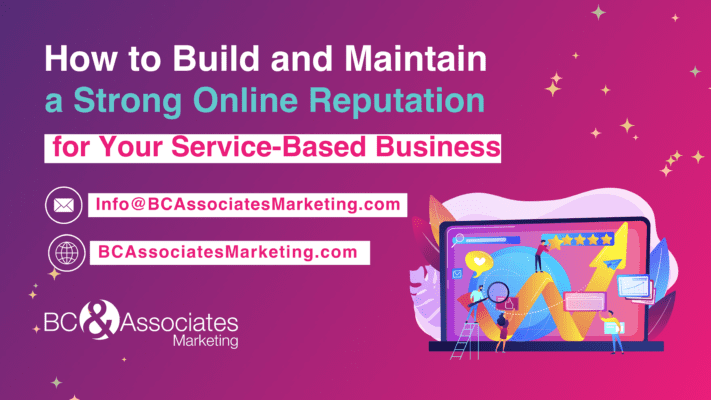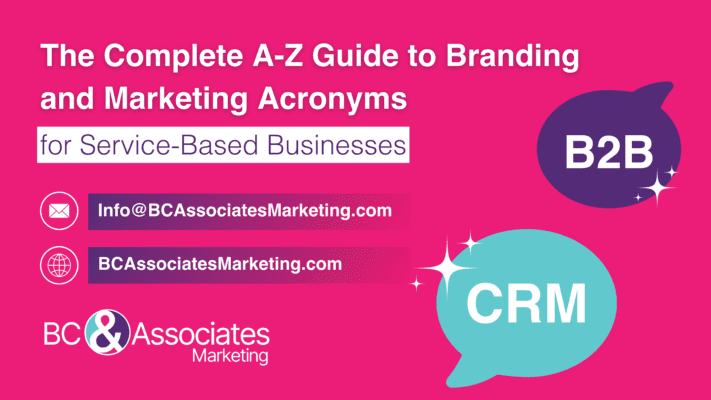Introduction
Struggling to establish a clear and consistent brand identity? Do you feel like your brand is all over the place, leaving potential customers confused and unsure about what you stand for? You’re not alone. Many service-based businesses face the challenge of creating a strong brand presence that resonates with their target audience. The good news is that you can transform your brand into a powerful asset that attracts and retains loyal customers with the right approach. This ultimate guide will walk you through the essential steps to building a strong service-based brand, helping you define your identity, develop a cohesive strategy, and maintain consistency across all touchpoints.
Why Branding Matters for Service-Based Businesses
Building a strong brand is crucial for the growth and success of your service-based business. A well-defined brand helps differentiate you from competitors, establishes trust and credibility with your audience, and creates a lasting impression. When your brand is clear and consistent, it communicates your values, mission, and unique selling points effectively, making it easier for customers to choose you over others.
Benefits of a Strong Service-Based Brand:
- Increased Customer Loyalty: Customers are more likely to return to a brand they recognize and trust.
- Better Customer Recognition: A strong brand makes it easier for customers to identify and remember your business.
- Enhanced Credibility and Trust: Consistency in branding builds credibility, making customers feel confident in your services.
- Higher Perceived Value: A well-established brand can command higher prices as customers perceive greater value.
Step 1: Define Your Brand Identity
Defining your brand identity is the foundation of building a strong service-based brand. This involves understanding who you are as a business, what you stand for, and how you want to be perceived by your audience.
Key Elements of Brand Identity:
- Mission Statement: Clearly articulate your business’s purpose and the value you provide to customers.
- Core Values: Identify the principles and beliefs that guide your business decisions and actions.
- Unique Selling Proposition (USP): Determine what sets your services apart from competitors.
- Brand Personality: Define the human characteristics that best represent your brand (e.g., trustworthy, innovative, friendly).
Actionable Tips:
- Conduct a Brand Audit: Assess your current branding efforts to identify strengths and areas for improvement.
- Create Buyer Personas: Develop detailed profiles of your ideal customers to understand their needs, preferences, and pain points.
- Craft a Brand Story: Develop a compelling narrative that connects emotionally with your audience and highlights your brand’s journey and mission.
Step 2: Develop a Cohesive Brand Strategy
Once you have a clear brand identity, the next step is to develop a cohesive brand strategy that aligns with your business goals and resonates with your target audience.
Components of a Brand Strategy:
- Brand Positioning: Determine how you want to be perceived in the market and what makes you unique.
- Brand Messaging: Create consistent messaging that conveys your brand’s value proposition, benefits, and personality.
- Visual Identity: Design a visual identity that reflects your brand, including logo, color palette, typography, and imagery.
- Brand Voice and Tone: Define the style and tone of communication that aligns with your brand personality (e.g., formal, casual, authoritative).
Actionable Tips:
- Competitive Analysis: Research competitors to identify gaps and opportunities for differentiation.
- Customer Feedback: Gather feedback from customers to refine your brand strategy and ensure it meets their needs and expectations.
- Brand Guidelines: Develop comprehensive brand guidelines to maintain consistency across all marketing materials and touchpoints.
Step 3: Implement and Maintain Brand Consistency
Consistency is key to building a strong service-based brand. It ensures that your brand is easily recognizable and trusted by your audience.
Strategies for Maintaining Brand Consistency:
- Employee Training: Ensure all team members understand and embody your brand values and messaging.
- Marketing Channels: Consistently apply your brand identity across all marketing channels, including your website, social media, email marketing, and advertising.
- Customer Experience: Deliver a consistent brand experience at every customer touchpoint, from initial contact to post-service follow-up.
Consistency is key to building a strong service-based brand. It ensures that your brand is easily recognizable and trusted by your audience. But did you know that brand consistency plays a crucial role in building and maintaining a strong online reputation too? Read our blog How to Build and Maintain a Strong Online Reputation. Learn how aligning your brand with a consistent reputation strategy can help you stand out and win customer loyalty.

Actionable Tips:
- Regular Audits: Conduct regular audits of your marketing materials and customer interactions to ensure brand consistency.
- Feedback Loop: Establish a feedback loop with customers to identify inconsistencies and areas for improvement.
- Technology Tools: Use technology tools such as brand asset management software to streamline and maintain brand consistency.
Common Mistakes and Myths About Branding
Even with the best intentions, many service-based businesses fall into common pitfalls when it comes to branding. Here are some mistakes to avoid and myths to debunk:
Mistakes to Avoid:
- Inconsistent Messaging: Sending mixed messages can confuse your audience and dilute your brand.
- Ignoring Customer Feedback: Neglecting to listen to your customers can result in a brand that doesn’t resonate with your target audience.
- Lack of Brand Guidelines: Without clear guidelines, maintaining consistency across different platforms and team members is challenging.
Myths to Debunk:
- Branding is Only for Big Businesses: Branding is crucial for businesses of all sizes. A strong brand can help small service-based businesses compete with larger companies.
- A Logo is a Brand: While a logo is an important element, branding encompasses much more, including your values, messaging, and customer experience.
- Once Established, Branding is Done: Branding is an ongoing process that requires continuous evaluation and adjustment to stay relevant and effective.
Want to learn how you can turn myths into actionable truths? Watch our video Turning 10 Marketing Myths to Actionable Truths.
Best Practices for Building a Strong Service-Based Brand
To ensure your branding efforts are successful, follow these best practices:
- Focus on Authenticity: Be genuine and transparent in your branding. Customers appreciate authenticity and are more likely to trust and engage with brands that are true to their values.
- Engage with Your Audience: Build relationships with your audience by engaging with them on social media, responding to feedback, and creating valuable content that addresses their needs and interests.
- Invest in Professional Design: High-quality design elements such as your logo, website, and marketing materials can significantly impact how your brand is perceived. Consider investing in professional design services to create a polished and cohesive visual identity.
Trends in Service-Based Branding
Staying current with branding trends can help you remain competitive and relevant in your industry. Here are some emerging trends to consider:
- Personalization: Customers expect personalized experiences. Tailor your branding efforts to individual customer preferences and behaviors to create a more engaging and memorable experience.
- Storytelling: Brands that tell compelling stories can create deeper emotional connections with their audience. Use storytelling to communicate your brand’s values, mission, and unique journey.
- Sustainability: Consumers are increasingly concerned about sustainability. Highlight your commitment to environmental and social responsibility in your branding to appeal to eco-conscious customers.
- CRM Integration: A CRM system can elevate your brand by streamlining communication and building long-term relationships. Use CRM tools to gather insights, personalize interactions, and ensure a seamless customer experience that drives loyalty.
Do you ever feel like you need to pause for a moment when marketing jargon starts flying around? It’s easy to get lost in the sea of acronyms and buzzwords, but don’t worry—we’ve got you covered! Our comprehensive alphabetical guide breaks down all the key marketing terms you might not be familiar with, demystifying those tricky acronyms so you can confidently make informed decisions and keep your business moving forward.

Bonus: Creative Ideas for Building Your Brand
Looking for additional ways to strengthen your service-based brand? Consider these creative ideas:
- Host Webinars or Workshops: Position yourself as an expert in your field by hosting educational webinars or workshops for your audience.
- Collaborate with Influencers: Partner with influencers in your industry to reach a wider audience and build credibility.
- Offer Branded Merchandise: Create branded merchandise such as t-shirts, mugs, or notebooks to increase brand visibility and loyalty.
Are you now curious on how collaborating with influencers can help you reach a bigger audience? If you are, this podcast episode is for you! Learn about the transformative power of strategic collaborations for service-based businesses as Beverly explains how partnering with like-minded organizations can help you grow your email list, expand your reach, and connect with your ideal clients. Plus, we have a FREE download just for you! You can Brainstorm Your Perfect Collaboration Partner once you finish hearing the episode!

Conclusion
Building a strong service-based brand is essential for standing out in a competitive market, attracting loyal customers, and driving business growth. By defining your brand identity, developing a cohesive brand strategy, and maintaining consistency across all touchpoints, you can create a powerful brand that resonates with your audience and sets you apart from the competition. Don’t wait to take action—start building your strong service-based brand today and see the transformative impact it can have on your business.
For more insights on effective branding and marketing strategies, check out our blog post on How to Develop a Powerful Marketing Plan for Your Service-Based Business.
P.S. Ready to spark your unique opportunities and ignite your marketing? Here are three ways to work with us.
1. 📞 Schedule a Complimentary 15-minute Call and let’s delve into your goals and answer any questions you may have.
2. 📘 Read Beverly’s book Marketing for Entrepreneurs a quick guide filled with actionable steps to help make your brand and business shine even brighter. 🎙️ Listen to Beverly’s Marketing Podcast where she interviews entrepreneurs to get inspired and gain new business and marketing insights.
3. 🎓 Learn more about marketing and Enroll in Our Marketing Courses designed to bring clarity to your business efforts. They’re easy-to-understand and self-paced, perfect for busy entrepreneurs like you.

